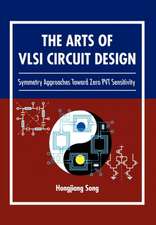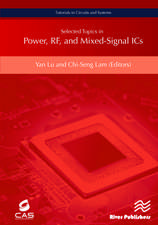Cybersecurity in Intelligent Networking Systems: IEEE Press
Autor S Xuen Limba Engleză Hardback – 7 dec 2022
Din seria IEEE Press
- 5%
 Preț: 599.39 lei
Preț: 599.39 lei - 20%
 Preț: 684.17 lei
Preț: 684.17 lei - 14%
 Preț: 743.46 lei
Preț: 743.46 lei - 24%
 Preț: 600.44 lei
Preț: 600.44 lei - 24%
 Preț: 1226.90 lei
Preț: 1226.90 lei - 24%
 Preț: 667.14 lei
Preț: 667.14 lei - 24%
 Preț: 672.03 lei
Preț: 672.03 lei - 24%
 Preț: 741.52 lei
Preț: 741.52 lei - 24%
 Preț: 546.23 lei
Preț: 546.23 lei - 24%
 Preț: 572.09 lei
Preț: 572.09 lei - 24%
 Preț: 706.11 lei
Preț: 706.11 lei - 24%
 Preț: 618.96 lei
Preț: 618.96 lei - 24%
 Preț: 704.87 lei
Preț: 704.87 lei - 24%
 Preț: 702.62 lei
Preț: 702.62 lei - 24%
 Preț: 617.44 lei
Preț: 617.44 lei - 24%
 Preț: 612.64 lei
Preț: 612.64 lei - 20%
 Preț: 446.57 lei
Preț: 446.57 lei - 24%
 Preț: 707.87 lei
Preț: 707.87 lei - 24%
 Preț: 695.85 lei
Preț: 695.85 lei - 14%
 Preț: 858.78 lei
Preț: 858.78 lei -
 Preț: 415.98 lei
Preț: 415.98 lei - 9%
 Preț: 1010.21 lei
Preț: 1010.21 lei - 9%
 Preț: 1499.89 lei
Preț: 1499.89 lei - 9%
 Preț: 806.07 lei
Preț: 806.07 lei - 9%
 Preț: 1069.47 lei
Preț: 1069.47 lei - 9%
 Preț: 1485.82 lei
Preț: 1485.82 lei - 9%
 Preț: 1020.25 lei
Preț: 1020.25 lei - 9%
 Preț: 930.31 lei
Preț: 930.31 lei - 9%
 Preț: 1117.45 lei
Preț: 1117.45 lei - 20%
 Preț: 723.20 lei
Preț: 723.20 lei - 9%
 Preț: 923.82 lei
Preț: 923.82 lei - 9%
 Preț: 994.01 lei
Preț: 994.01 lei - 9%
 Preț: 963.51 lei
Preț: 963.51 lei - 9%
 Preț: 1969.97 lei
Preț: 1969.97 lei - 9%
 Preț: 742.90 lei
Preț: 742.90 lei - 9%
 Preț: 1021.22 lei
Preț: 1021.22 lei - 9%
 Preț: 997.70 lei
Preț: 997.70 lei - 9%
 Preț: 970.56 lei
Preț: 970.56 lei - 9%
 Preț: 781.15 lei
Preț: 781.15 lei - 9%
 Preț: 1162.23 lei
Preț: 1162.23 lei - 9%
 Preț: 1030.34 lei
Preț: 1030.34 lei - 9%
 Preț: 815.85 lei
Preț: 815.85 lei - 9%
 Preț: 1130.31 lei
Preț: 1130.31 lei - 9%
 Preț: 1560.74 lei
Preț: 1560.74 lei - 9%
 Preț: 1289.30 lei
Preț: 1289.30 lei - 9%
 Preț: 1036.75 lei
Preț: 1036.75 lei - 9%
 Preț: 968.96 lei
Preț: 968.96 lei - 9%
 Preț: 1130.63 lei
Preț: 1130.63 lei - 9%
 Preț: 1010.82 lei
Preț: 1010.82 lei - 9%
 Preț: 1237.02 lei
Preț: 1237.02 lei
Preț: 744.14 lei
Preț vechi: 817.73 lei
-9% Nou
Puncte Express: 1116
Preț estimativ în valută:
142.40€ • 147.77$ • 119.03£
142.40€ • 147.77$ • 119.03£
Carte tipărită la comandă
Livrare economică 17-31 martie
Preluare comenzi: 021 569.72.76
Specificații
ISBN-13: 9781119783916
ISBN-10: 1119783917
Pagini: 144
Dimensiuni: 165 x 234 x 15 mm
Greutate: 0.37 kg
Editura: Wiley
Seria IEEE Press
Locul publicării:Chichester, United Kingdom
ISBN-10: 1119783917
Pagini: 144
Dimensiuni: 165 x 234 x 15 mm
Greutate: 0.37 kg
Editura: Wiley
Seria IEEE Press
Locul publicării:Chichester, United Kingdom
Cuprins
Contents
Preface xiii
Acknowledgments xvii
Acronyms xix
1 Cybersecurity in the Era of Artificial Intelligence 1
1.1 Artificial Intelligence for Cybersecurity . 2
1.1.1 Artificial Intelligence 2
1.1.2 Machine Learning 4
1.1.3 Data-Driven Workflow for Cybersecurity . 6
1.2 Key Areas and Challenges 7
1.2.1 Anomaly Detection . 8
1.2.2 Trustworthy Artificial Intelligence . 10
1.2.3 Privacy Preservation . 10
1.3 Toolbox to Build Secure and Intelligent Systems . 11
1.3.1 Machine Learning and Deep Learning . 12
1.3.2 Privacy-Preserving Machine Learning . 14
1.3.3 Adversarial Machine Learning . 15
1.4 Data Repositories for Cybersecurity Research . 16
1.4.1 NSL-KDD . 17
1.4.2 UNSW-NB15 . 17
v
1.4.3 EMBER 18
1.5 Summary 18
2 Cyber Threats and Gateway Defense 19
2.1 Cyber Threats . 19
2.1.1 Cyber Intrusions . 20
2.1.2 Distributed Denial of Services Attack . 22
2.1.3 Malware and Shellcode . 23
2.2 Gateway Defense Approaches 23
2.2.1 Network Access Control 24
2.2.2 Anomaly Isolation 24
2.2.3 Collaborative Learning . 24
2.2.4 Secure Local Data Learning 25
2.3 Emerging Data-Driven Methods for Gateway Defense 26
2.3.1 Semi-Supervised Learning for Intrusion Detection 26
2.3.2 Transfer Learning for Intrusion Detection 27
2.3.3 Federated Learning for Privacy Preservation . 28
2.3.4 Reinforcement Learning for Penetration Test 29
2.4 Case Study: Reinforcement Learning for Automated Post-Breach
Penetration Test . 30
2.4.1 Literature Review 30
2.4.2 Research Idea 31
2.4.3 Training Agent using Deep Q-Learning 32
2.5 Summary 34
vi
3 Edge Computing and Secure Edge Intelligence 35
3.1 Edge Computing . 35
3.2 Key Advances in Edge Computing . 38
3.2.1 Security 38
3.2.2 Reliability . 41
3.2.3 Survivability . 42
3.3 Secure Edge Intelligence . 43
3.3.1 Background and Motivation 44
3.3.2 Design of Detection Module 45
3.3.3 Challenges against Poisoning Attacks . 48
3.4 Summary 49
4 Edge Intelligence for Intrusion Detection 51
4.1 Edge Cyberinfrastructure . 51
4.2 Edge AI Engine 53
4.2.1 Feature Engineering . 53
4.2.2 Model Learning . 54
4.2.3 Model Update 56
4.2.4 Predictive Analytics . 56
4.3 Threat Intelligence 57
4.4 Preliminary Study . 57
4.4.1 Dataset 57
4.4.2 Environment Setup . 59
4.4.3 Performance Evaluation . 59
vii
4.5 Summary 63
5 Robust Intrusion Detection 65
5.1 Preliminaries 65
5.1.1 Median Absolute Deviation . 65
5.1.2 Mahalanobis Distance 66
5.2 Robust Intrusion Detection . 67
5.2.1 Problem Formulation 67
5.2.2 Step 1: Robust Data Preprocessing 68
5.2.3 Step 2: Bagging for Labeled Anomalies 69
5.2.4 Step 3: One-Class SVM for Unlabeled Samples . 70
5.2.5 Step 4: Final Classifier . 74
5.3 Experiment and Evaluation . 76
5.3.1 Experiment Setup 76
5.3.2 Performance Evaluation . 81
5.4 Summary 92
6 Efficient Preprocessing Scheme for Anomaly Detection 93
6.1 Efficient Anomaly Detection . 93
6.1.1 Related Work . 95
6.1.2 Principal Component Analysis . 97
6.2 Efficient Preprocessing Scheme for Anomaly Detection . 98
6.2.1 Robust Preprocessing Scheme . 99
6.2.2 Real-Time Processing 103
viii
6.2.3 Discussions 103
6.3 Case Study . 104
6.3.1 Description of the Raw Data 105
6.3.2 Experiment 106
6.3.3 Results 108
6.4 Summary 109
7 Privacy Preservation in the Era of Big Data 111
7.1 Privacy Preservation Approaches 111
7.1.1 Anonymization 111
7.1.2 Differential Privacy . 112
7.1.3 Federated Learning . 114
7.1.4 Homomorphic Encryption 116
7.1.5 Secure Multi-Party Computation . 117
7.1.6 Discussions 118
7.2 Privacy-Preserving Anomaly Detection . 120
7.2.1 Literature Review 121
7.2.2 Preliminaries . 123
7.2.3 System Model and Security Model 124
7.3 Objectives and Workflow . 126
7.3.1 Objectives . 126
7.3.2 Workflow . 128
7.4 Predicate Encryption based Anomaly Detection . 129
7.4.1 Procedures 129
ix
7.4.2 Development of Predicate . 131
7.4.3 Deployment of Anomaly Detection 132
7.5 Case Study and Evaluation . 134
7.5.1 Overhead . 134
7.5.2 Detection . 136
7.6 Summary 137
8 Adversarial Examples: Challenges and Solutions 139
8.1 Adversarial Examples . 139
8.1.1 Problem Formulation in Machine Learning 140
8.1.2 Creation of Adversarial Examples . 141
8.1.3 Targeted and Non-Targeted Attacks . 141
8.1.4 Black-Box and White-Box Attacks 142
8.1.5 Defenses against Adversarial Examples 142
8.2 Adversarial Attacks in Security Applications 143
8.2.1 Malware 143
8.2.2 Cyber Intrusions . 143
8.3 Case Study: Improving Adversarial Attacks Against Malware
Detectors 144
8.3.1 Background 144
8.3.2 Adversarial Attacks on Malware Detectors 145
8.3.3 MalConv Architecture 147
8.3.4 Research Idea 148
8.4 Case Study: A Metric for Machine Learning Vulnerability to
Adversarial Examples . 149
8.4.1 Background 149
8.4.2 Research Idea 150
8.5 Case Study: Protecting Smart Speakers from Adversarial Voice
Commands . 153
8.5.1 Background 153
8.5.2 Challenges 154
8.5.3 Directions and Tasks 155
8.6 Summary 157
Notă biografică
Shengjie Xu, PhD, is an IEEE member and is an Assistant Professor in the Management Information Systems Department at San Diego State University, USA.
Yi Qian, PhD, is an IEEE Fellow and is a Professor in the Department of Electrical and Computer Engineering at the University of Nebraska-Lincoln, USA.
Rose Qingyang Hu, PhD, is an IEEE Fellow. She is also a Professor with the Electrical and Computer Engineering Department and the Associate Dean for Research of the College of Engineering, Utah State University, USA.
















